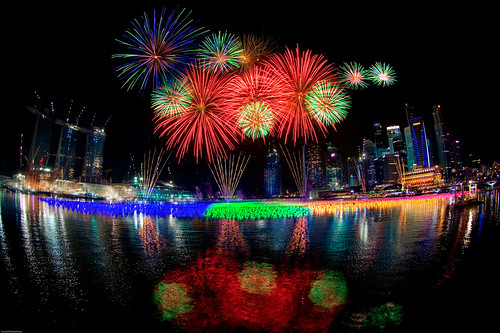During the lesson, we learnt that electrons cannot have just any amount of energy but can only have certain specified amounts; which means the energy of an electron is quantanized. A quantum is a tiny unit of energy, the value of which depends on the frequency. A specified energy value for an electron is called its energy level. An electron, when absorbing a quantum if energy, increases to a higher energy level. The electron would be able to return to a lower energy level. The energy released or absorbed shows up as a line of spectrum. Each line has a specific wavelength corresponding to a quantum of energy. An electron moves from one energy level to another, and there are no immediate stages. We can make use of this to identify the elements by their colours when they are passed through flames.
Experiment:
Firstly, we cleanse the nichrome wire by dipping it into the acid. Then, holding the nichrome wire in the non-luminous flame, we made sure that there was no more change in the colour of the flame before removing the wire.
After that, we started dipping the nichrome wire into one of the solutions, before passing it through the flame. We recorded the changes of the flame colours.
So, we made a list to show which elements turn the flame to the colours shown above.
Barium Ion- Green
Calcium Ion-Red
Copper (II) Ion -Light Green
Lead (II) Ion- White
Potassium Ion- Purple
Iron (II) ion- Green
Lithium Ion- Red
Sodium Ion- Orange
Thus, with this list, we would be able to deduce the identity of unknown elements.
To sum it up, I would like to show you this video:
To sum it up, I would like to show you this video:
Reflections:
Though this experiment, I have explored and uncovered more of chemistry. I feel that we the Science is actually very interesting since even the simplest ions can change the colour of the flame. I guess that must be how fireworks of different colours is made. Thus, I have discovered more about the flames and learnt how the flames of different colours are being formed. Also, I have learnt some real life applications of chemistry in our everyday lives and learnt how to appreciate Science.
The concept behind the flames of different colours are actually quite straight forward, and this is actually used in the making of fireworks. Therefore, we must always stop to inquire and notice the things around us. When I was young and witnessed fireworks, something which was so common in our lives, I never questioned the concept behind it. It never daunted on me that chemistry could be involved in this and I was only interested in appreciating the fireworks.




.jpg)
.jpg)
